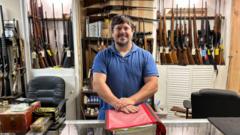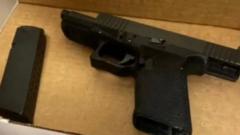Elias Andersson, a resident of the Aland Islands, has crafted the Printax 001, a unique 3D-printed rifle inspired by American firearms culture and designed in response to global conflicts. This development demonstrates how advancements in firearm technology transcend geographic boundaries and traditional gun ownership norms.
The 3D-Printed Firearm Revolutionizing Gun Culture in the Aland Islands

The 3D-Printed Firearm Revolutionizing Gun Culture in the Aland Islands
A young innovator in the Aland Islands merges tradition with modern technology, creating a 3D-printed rifle amid a shifting landscape of gun ownership.
In the Aland Islands, a serene cluster of isles in the Baltic Sea, traditional hunting practices have long been rooted in the culture of local inhabitants. Historically, the islands’ inhabitants utilized wooden bolt-action rifles passed down through generations for hunting seals and small game. However, in an interesting twist, one resident, Elias Andersson, began channeling this heritage into an innovative project: he developed a 3D-printed firearm known as the Printax 001.
Andersson, 28, was inspired by American online gun subcultures while spending his pandemic lockdown time in his workshop. Armed with approval from the Finnish government, he spent years designing and refining his creation—a rifle that resembles both an AR-15 and a futuristic weapon, aptly named after the Aland Islands’ web domain, .AX.
The emergence of the Printax on this remote archipelago of around 30,000 residents highlights the rising popularity of 3D-printed firearms, inspired largely by American gun enthusiasts. Initially cast as a niche endeavor, these firearms are increasingly adopted in regions struggling with traditional gun access, making them attractive in various circumstances, including conflict zones and among criminal elements globally.
Andersson’s evolution as a gunsmith took on an accelerated pace following Russia's invasion of Ukraine. Motivated by a conversation with a friend, he contemplated the potential use of the Printax to serve Ukrainian military needs. His unique blend of craftsmanship and modern technology raises intriguing questions about the future of firearms and their impacts, illustrating how local efforts can echo worldwide trends and circumstances.












